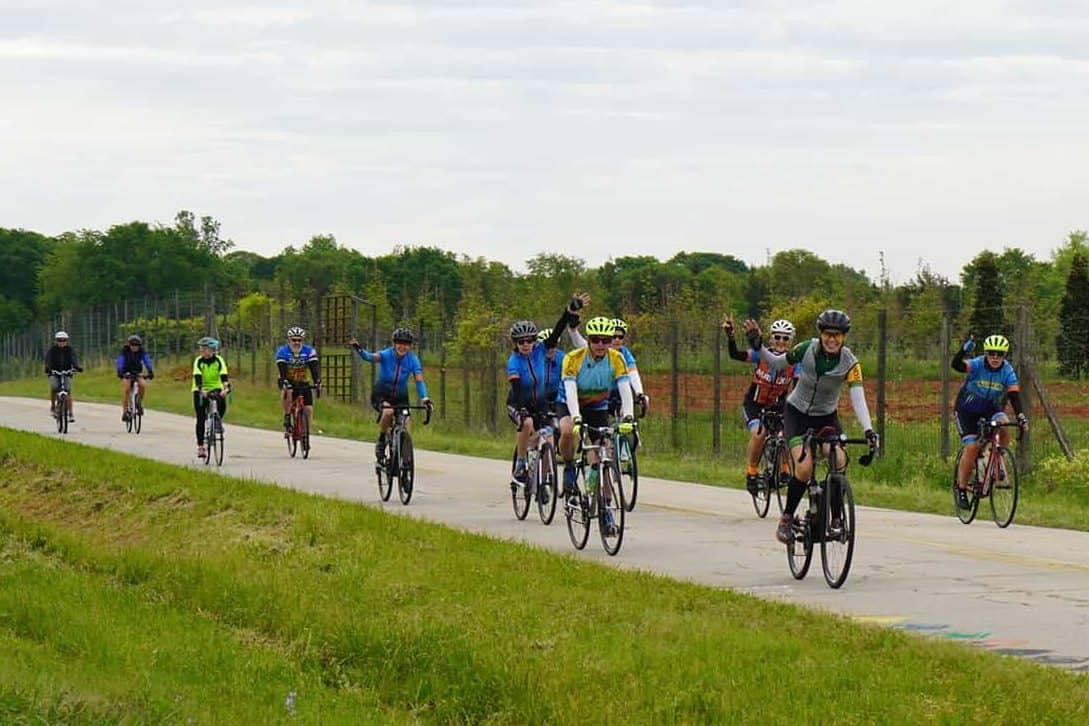Do you love to ride your bike for hours on end? If so, you’re in very good company! Century bike rides (100 miles) and metric centuries (100 km) are very popular among amateur cyclists and weekend warriors. In fact, BRAG offers century bike ride options during both on the Saturday during Spring TuneUp and one day during Big BRAG Below, we’ll look at the history of century rides and find out how they became popular in the United States.
The history of century bike rides is almost as old as the bicycle itself! While its origins are a tad murky, the first century bike ride on record occurs in 1876 when a group of cyclists rode from San Francisco to Santa Cruz. This ride was organized by bicycle enthusiast Albert Pope, credited with popularizing the sport of bicycling in the United States. In the 1890’s, Colorado cyclist Dora Rinehart gained notoriety for her century rides in Denver.
Cyclists are often required to complete the entire distance in one day. In the early days of century rides, this was daunting, and few riders were up for the challenge. As century rides became more popular, however, organizers began to offer riders the option of completing the ride over two days. This made century rides much more accessible to the average cyclist, and as a result, they became increasingly popular. Ottawa’s Rideau Lakes Cycle Tour started in 1972 with eighty riders. The Apple Cider Century in Michigan dates back to 1974.

Today, century rides are a staple of the amateur cycling scene. Every year, thousands of cyclists take to the roads to complete century rides of their own. If you’re looking for a century ride near you, chances are there’s one in your area. All you need to do is type “century bike rides near me” into your search engine of choice, and you’re sure to find one that’s just right for you.
Below we’ve outlined some reasons they’ve become so popular.
1. It’s Easy to Participate in a Century Bike Ride
One reason century bike rides became very popular is that they are easy to participate in. All you need is a bicycle and the will to ride 100 miles or 100 kilometers to participate.
With a month or so of training and building up miles, most people who regularly bicycle can be ready to ride a century. There are century bike rides happening all over the United States, so chances are there is one near you.

2. Century Rides Are For a Good Cause
Another reason century bike rides are popular is that many are for a good cause. For example, the century bike ride might raise money for cancer research or support disabled veterans. When people know their efforts are going towards a good cause, they are more likely to participate.
3. Cyclists Are Not Limited to One Day
In the early days of century rides, cyclists were required to complete the ride in one day. This was daunting, and few riders were up for the challenge. As century rides became more popular, organizers began to offer riders the option of completing the ride over two days. This made century rides much more accessible to average cyclists, and as a result, they became increasingly popular.

4. It’s Fun to Bike a Century!
Last but not least, century bike rides are popular because they are simply fun! Nothing is like being out on the open road, surrounded by nature, and pedaling away.
Century bike rides have been around for less than 150 years, but in that time, they have become extremely popular. This is because they are easy to participate in, many of them are for a good cause, riders are not limited to one day, and it’s a fun activity.
